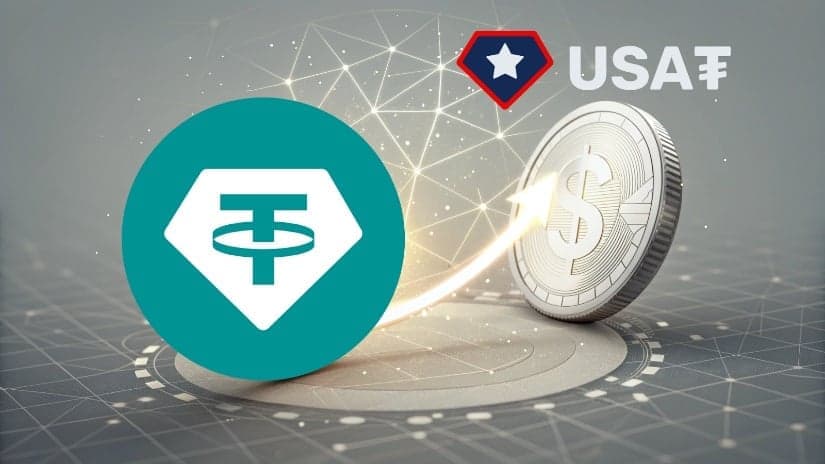Tether Unveils U.S.-Regulated USAT Stablecoin Amidst Trillion-Dollar Market Projections

Tether, the world's largest stablecoin issuer, is set to launch USA₮ (USAT), a new U.S.-based stablecoin designed to comply with the recently enacted GENIUS Act. This strategic move, detailed in a recent social media post by Lumida CEO Ram Ahluwalia, CFA, positions USAT to be issued by OCC-chartered Anchorage Digital Bank NA, marking a significant step towards regulated digital dollar offerings in the United States. The launch is anticipated by the end of 2025, with former White House official Bo Hines appointed as CEO of Tether USAT.
USAT will operate distinctly from Tether's existing global stablecoin, USDT, which will continue to be issued by Tether International. The new stablecoin aims for full compliance with the GENIUS Act, a landmark U.S. legislation signed in July 2025 that mandates stringent reserve requirements, regular audits, and federally chartered institutional backing. Cantor Fitzgerald will serve as USAT's custodian, reinforcing its commitment to regulatory standards.
Industry experts are projecting substantial growth for the stablecoin market. Ram Ahluwalia suggested in his tweet that stablecoin adoption could reach "$10 Tn+" emphasizing their role in enabling "US to dominate via 24x7 cross border movement and int’l adoption." Tether CEO Paolo Ardoino, however, has publicly offered a more conservative forecast, predicting the stablecoin market could swell to $2.8 trillion within five years, driven by utility in emerging markets and institutional adoption.
Ahluwalia highlighted goals for USAT to benefit from USDT's existing liquidity, with an ambition to make both stablecoins "interoperable and have seamless corridors and 24x7 markets." He also noted Tether's broader strategy to "provide retail offerings for consumer off ramps including via lending and purchases," with some reports indicating plans to leverage platforms like Rumble for mass consumer reach.
The digital asset landscape continues to grapple with regulatory complexities, including a "schism" around "rewards vs interest in the Clarity Act between traditional finance and digital assets," as noted by Ahluwalia. The Clarity Act seeks to define digital assets as commodities and clarify the regulatory treatment of interest-bearing digital assets. Other open issues include the feasibility of "transfer agents on blockchain" and how to ensure security tokens are "permissionless, while ensuring the underlying assets have the relevant disclosures."
Looking ahead, the rise of "Super Apps" is expected to reshape financial services, challenging traditional institutions like Schwab and Morgan Stanley. Ahluwalia concluded, "Pretty sure Lumida is poised to survive and thrive," indicating a belief in the evolving digital finance ecosystem. Stablecoins, particularly for "institutional collateral mgmt," are seen as a core use case driving this transformation.